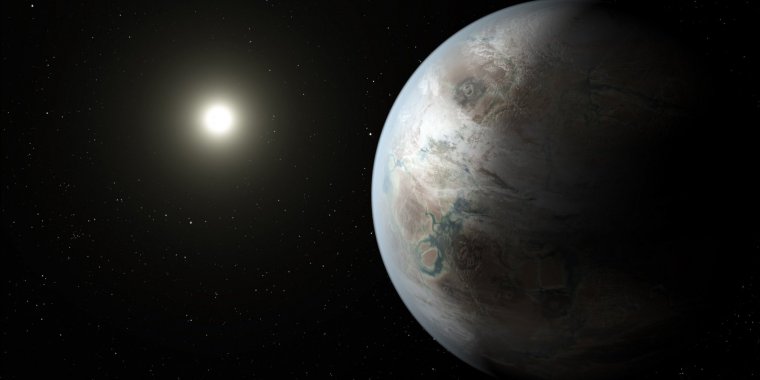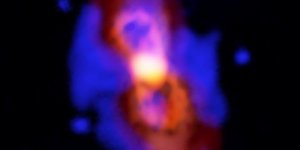| News / Space News |
Scientists identify exoplanets where life could develop as it did on Earth
The researchers, from the University of Cambridge and the Medical Research Council Laboratory of Molecular Biology (MRC LMB), found that the chances for life to develop on the surface of a rocky planet like Earth are connected to the type and strength of light given off by its host star.

This artist's concept depicts one possible appearance of the planet Kepler-452b, the first near-Earth-size world to be found in the habitable zone of a star that is similar to our sun. Image credit: NASA Ames/JPL-Caltech/T. Pyle
Their study proposes that stars which give off sufficient ultraviolet (UV) light could kick-start life on their orbiting planets in the same way it likely developed on Earth, where the UV light powers a series of chemical reactions that produce the building blocks of life.
The researchers have identified a range of planets where the UV light from their host star is sufficient to allow these chemical reactions to take place, and that lie within the habitable range where liquid water can exist on the planet’s surface.
In a paper published in 2015, researchers proposed that cyanide, although a deadly poison, was in fact a key ingredient in the primordial soup from which all life on Earth originated.
In this hypothesis, carbon from meteorites that slammed into the young Earth interacted with nitrogen in the atmosphere to form hydrogen cyanide. The hydrogen cyanide rained to the surface, where it interacted with other elements in various ways, powered by the UV light from the sun.
The chemicals produced from these interactions generated the building blocks of RNA, the close relative of DNA which most biologists believe was the first molecule of life to carry information.
In the laboratory they recreated these chemical reactions under UV lamps, and generated the precursors to lipids, amino acids and nucleotides, all of which are essential components of living cells.
They performed a series of laboratory experiments to measure how quickly the building blocks of life can be formed from hydrogen cyanide and hydrogen sulphite ions in water when exposed to UV light. They then performed the same experiment in the absence of light.
There is chemistry that happens in the dark: it’s slower than the chemistry that happens in the light, but it’s there.
The same experiment run in the dark with the hydrogen cyanide and the hydrogen sulphite resulted in an inert compound which could not be used to form the building blocks of life, while the experiment performed under the lights did result in the necessary building blocks.
The researchers then compared the light chemistry to the dark chemistry against the UV light of different stars. They plotted the amount of UV light available to planets in orbit around these stars to determine where the chemistry could be activated.
They found that stars around the same temperature as our sun emitted enough light for the building blocks of life to have formed on the surfaces of their planets.
Cool stars, on the other hand, do not produce enough light for these building blocks to be formed, except if they have frequent powerful solar flares to jolt the chemistry forward step by step. Planets that both receive enough light to activate the chemistry and could have liquid water on their surfaces reside in what the researchers have called the abiogenesis zone.
Among the known exoplanets which reside in the abiogenesis zone are several planets detected by the Kepler telescope, including Kepler 452b, a planet that has been nicknamed Earth’s ‘cousin’, although it is too far away to probe with current technology.
Next-generation telescopes, such as NASA’s TESS and James Webb Telescopes, will hopefully be able to identify and potentially characterise many more planets that lie within the abiogenesis zone.
According to recent estimates, there are as many as 700 million trillion terrestrial planets in the observable universe. (University of Cambridge)
YOU MAY ALSO LIKE





